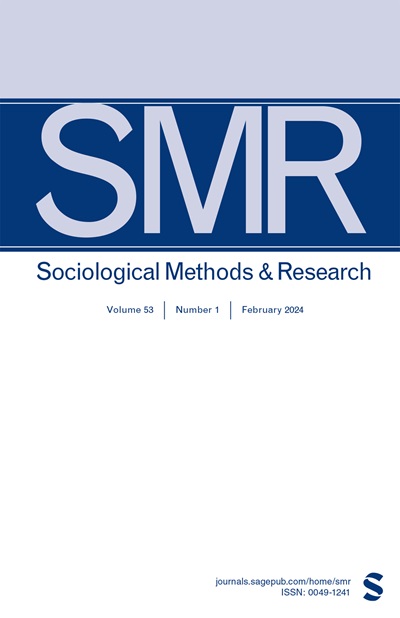重新审视线性概率模型:它为什么工作以及它应该如何被指定
IF 6.5
2区 社会学
Q1 SOCIAL SCIENCES, MATHEMATICAL METHODS
引用次数: 0
摘要
线性模型通常用于发现二元处理[公式:见文]对具有协变量[公式:见文]的不连续结果[公式:见文]的影响。特别地,二元[公式:见文本]给出了流行的“线性概率模型(LPM)”,但是如果[公式:见文本]包含连续回归量,线性模型就站不住脚。这就提出了一个问题:普通最小二乘估计器(OLS)对LPM估计了什么样的治疗效果?本文表明,OLS估计了[公式:见文本]-条件异质性效应加上偏差的加权平均值。当[Formula: see text]等于[Formula: see text]在[Formula: see text]上的线性投影时,偏差变为零,OLS估计[Formula: see text]-条件效应的“重叠加权平均值”。虽然这个条件通常不成立,指定[公式:见文本]- LPM的一部分,使得[公式:见文本]-部分预测[公式:见文本],而不是[公式:见文本],可以反直觉地最小化偏差。本文还展示了如何使用“倾向-分数残差”来估计没有条件的重叠加权平均值[公式:见文本]。实证分析证明了我们的观点。本文章由计算机程序翻译,如有差异,请以英文原文为准。
Linear Probability Model Revisited: Why It Works and How It Should Be Specified
A linear model is often used to find the effect of a binary treatment [Formula: see text] on a noncontinuous outcome [Formula: see text] with covariates [Formula: see text]. Particularly, a binary [Formula: see text] gives the popular “linear probability model (LPM),” but the linear model is untenable if [Formula: see text] contains a continuous regressor. This raises the question: what kind of treatment effect does the ordinary least squares estimator (OLS) to LPM estimate? This article shows that the OLS estimates a weighted average of the [Formula: see text]-conditional heterogeneous effect plus a bias. Under the condition that [Formula: see text] is equal to the linear projection of [Formula: see text] on [Formula: see text], the bias becomes zero, and the OLS estimates the “overlap-weighted average” of the [Formula: see text]-conditional effect. Although the condition does not hold in general, specifying the [Formula: see text]-part of the LPM such that the [Formula: see text]-part predicts [Formula: see text] well, not [Formula: see text], minimizes the bias counter-intuitively. This article also shows how to estimate the overlap-weighted average without the condition by using the “propensity-score residual” [Formula: see text]. An empirical analysis demonstrates our points.
求助全文
通过发布文献求助,成功后即可免费获取论文全文。
去求助
来源期刊

Sociological Methods & Research
Multiple-
CiteScore
16.30
自引率
3.20%
发文量
40
期刊介绍:
Sociological Methods & Research is a quarterly journal devoted to sociology as a cumulative empirical science. The objectives of SMR are multiple, but emphasis is placed on articles that advance the understanding of the field through systematic presentations that clarify methodological problems and assist in ordering the known facts in an area. Review articles will be published, particularly those that emphasize a critical analysis of the status of the arts, but original presentations that are broadly based and provide new research will also be published. Intrinsically, SMR is viewed as substantive journal but one that is highly focused on the assessment of the scientific status of sociology. The scope is broad and flexible, and authors are invited to correspond with the editors about the appropriateness of their articles.
 求助内容:
求助内容: 应助结果提醒方式:
应助结果提醒方式:


